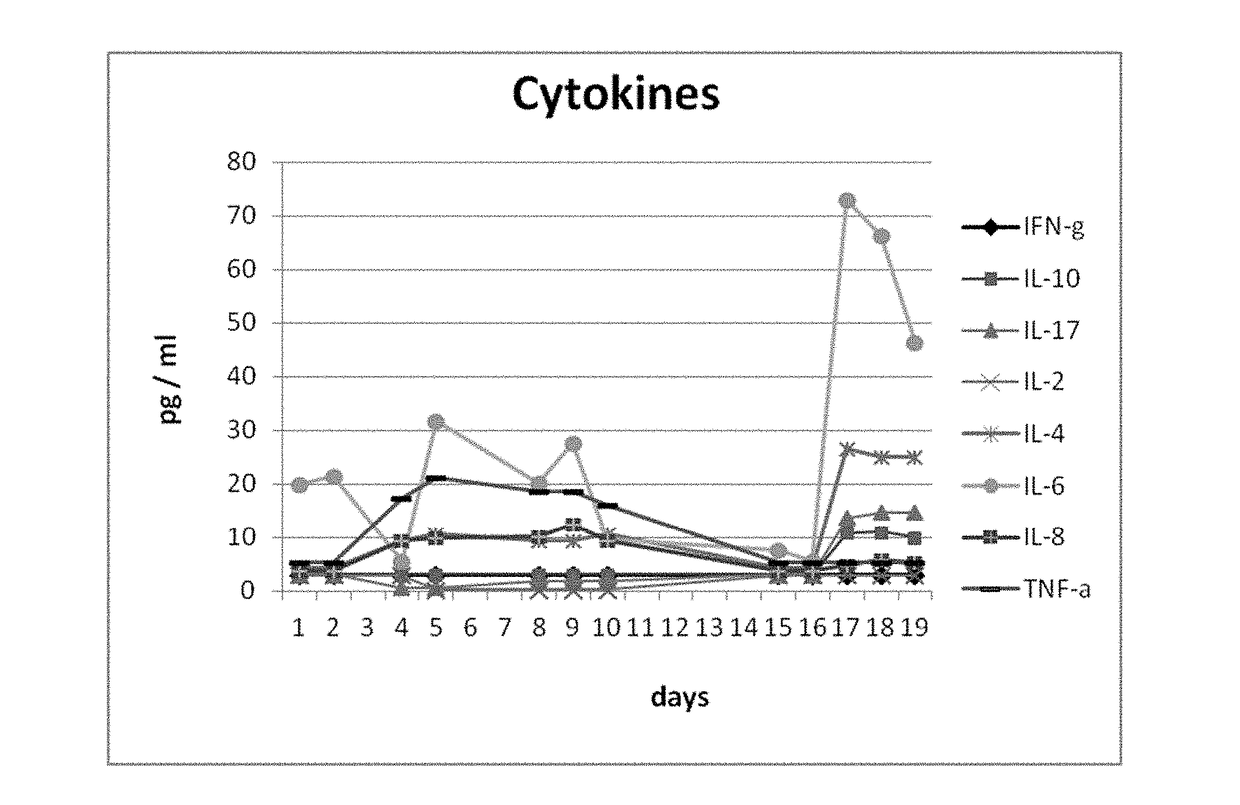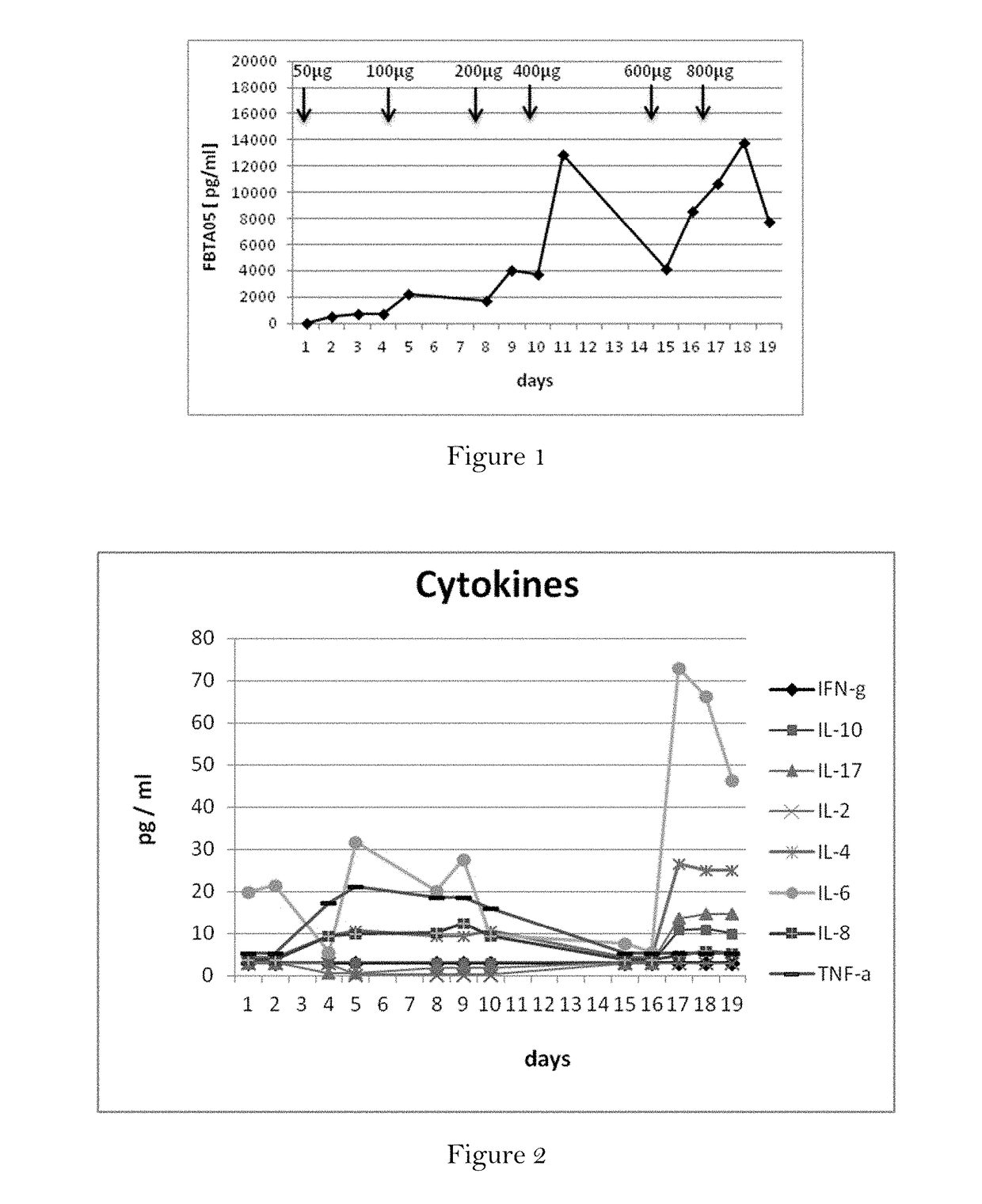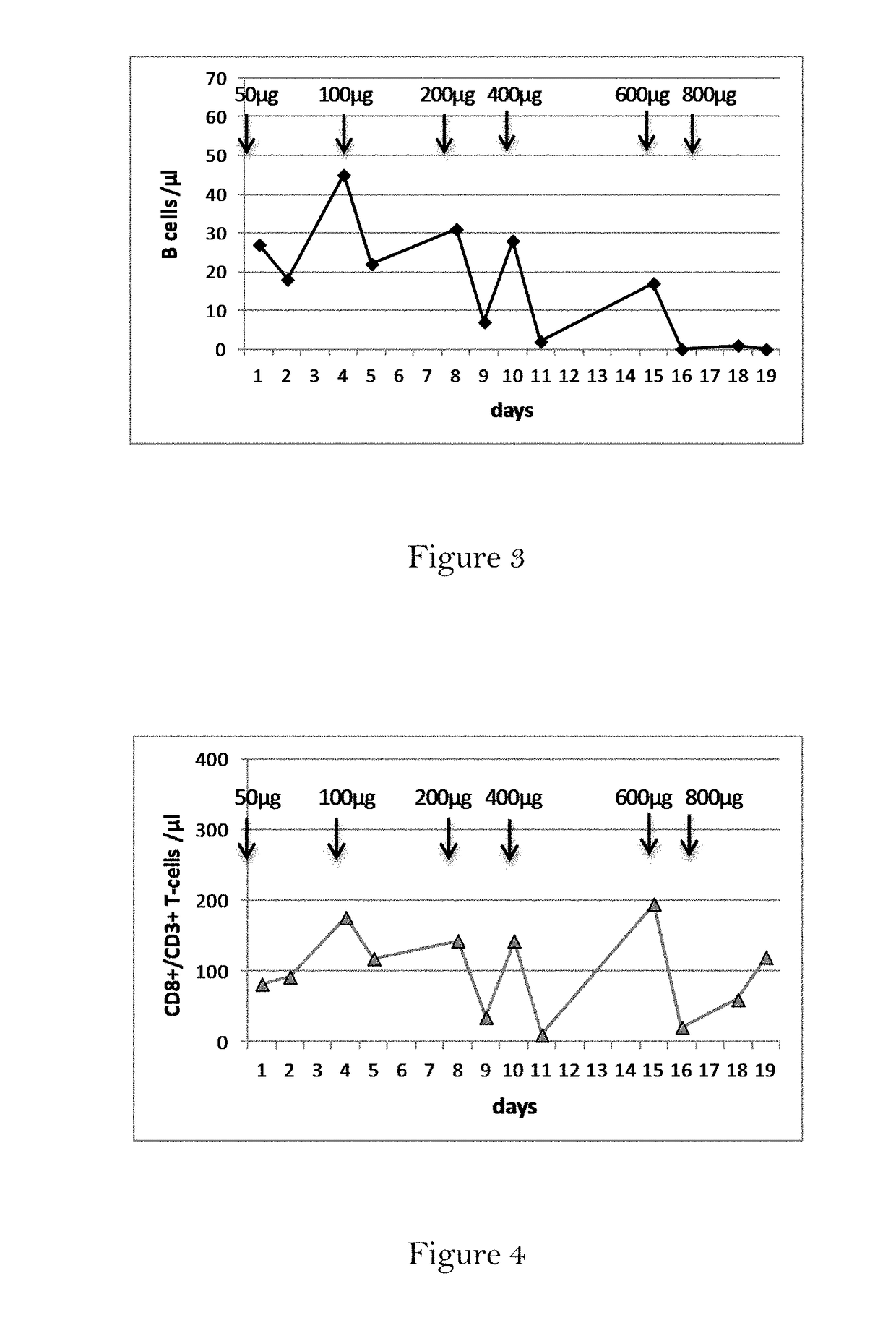Subcutaneously administered bispecific antibodies for use in the treatment of cancer
a cancer and bispecific antibody technology, applied in the field of bispecific antibodies, can solve the problems of catumaxomab therapy being associated with nausea, vomiting, chills, and their immunological mode of action triggering unwanted side effects, so as to reduce the release of proinflammatory cytokines, avoid undesired side effects, and improve the effect of cytokine releas
- Summary
- Abstract
- Description
- Claims
- Application Information
AI Technical Summary
Benefits of technology
Problems solved by technology
Method used
Image
Examples
example 1
[0134]Patient and Treatment Schedule:
[0135]In this pilot study, a Hodgkin-Lymphoma patient (41 years old, Hodgkin's disease, nodular sclerotic type, CD30, CD20, CD15 positive, diagnosed 14 years before the present study started) was chosen because the patient did not receive any previous immunosuppression in the last year before treatment, in order to avoid any impact of immunosuppression on the immunological effects of the trifunctional antibody, e.g. the cytokine release. The patient had various treatments before, like BMOP chemotherapy in change with cyclophosphamide and adriamycin with partial remission followed by mantle field radiation stopped after 2nd radiation due to severe side effects. Progressive disease was treated with ESHAP chemotherapy without remission. This was followed by a change of chemotherapy to gemcitabine / navelbine and dexamethasone with partial remission. Several chemotherapies were partly combined with radiotherapy (72Gy) mediastinal and both sides hilar. ...
example 2
[0172]Patient and Treatment Schedule:
[0173]In this pilot study, a patient with metastatic breast cancer (female, age 54) was treated with escalating doses of the trifunctional antibody ertumaxomab (anti-HER2 x anti-CD3), administered subcutaneously. The treatment schedule included an initial dose of 50 μg ertumaxomab on day 1, followed by 100 μg ertumaxomab on day 4.
[0174]Antibody Tested, Drug Formulation and Administration:
[0175]Ertumaxomab is a trifunctional bispecific monoclonal antibody targeting HER2 / neu and CD3. It is usually produced by a quadroma cell line prepared by the fusion of a specific rat (anti-CD3) and mouse hybridoma cell line (anti-HER2). The heavy chain is composed of murine IgG2a and rat IgG2b subclasses with particularly selective binding to activatory Fcγ type I / III receptors. Together with its two antigen-binding sites, ertumaxomab is able to bind HER2 / neu-positive tumor cells, T cells, and simultaneously via its Fc portion, Fcγ receptor-positive accessory ce...
example 3
[0189]Patient and Treatment Schedule:
[0190]In this study, a patient having recividated, Rituximab-refractory, CD20+ diffuse large B-cell lymphoma (DLBCL) with primary cutaneous manifestation was treated. At the beginning of the treatment, the number of CD20+ B-cells in the blood of the patient was in normal range (251 / μl).
[0191]The patient received a cumulative dose of 6000 μg (6 mg) of the trifunctional antibody FBTA05 / Lymphomun (anti-CD20 x anti-CD3) subcutaneously within 21 days (7 injections in total). The trifunctional antibody FBTA05 (anti-CD20 x anti-CD3) was administered at escalating doses, whereby a single dose of 100 μg was administered at day 0, a single dose of 200 μg was administered at day 3, a single dose of 400 μg was administered at day 7, a single dose of 800 μg was administered at day 10, a single dose of 1000 μg was administered at day 14, a single dose of 1500 μg was administered at day 17 and a single dose of 2000 μg was administered at day 21, as shown below ...
PUM
| Property | Measurement | Unit |
|---|---|---|
| volume | aaaaa | aaaaa |
| angle | aaaaa | aaaaa |
| pH | aaaaa | aaaaa |
Abstract
Description
Claims
Application Information
 Login to View More
Login to View More - R&D
- Intellectual Property
- Life Sciences
- Materials
- Tech Scout
- Unparalleled Data Quality
- Higher Quality Content
- 60% Fewer Hallucinations
Browse by: Latest US Patents, China's latest patents, Technical Efficacy Thesaurus, Application Domain, Technology Topic, Popular Technical Reports.
© 2025 PatSnap. All rights reserved.Legal|Privacy policy|Modern Slavery Act Transparency Statement|Sitemap|About US| Contact US: help@patsnap.com



